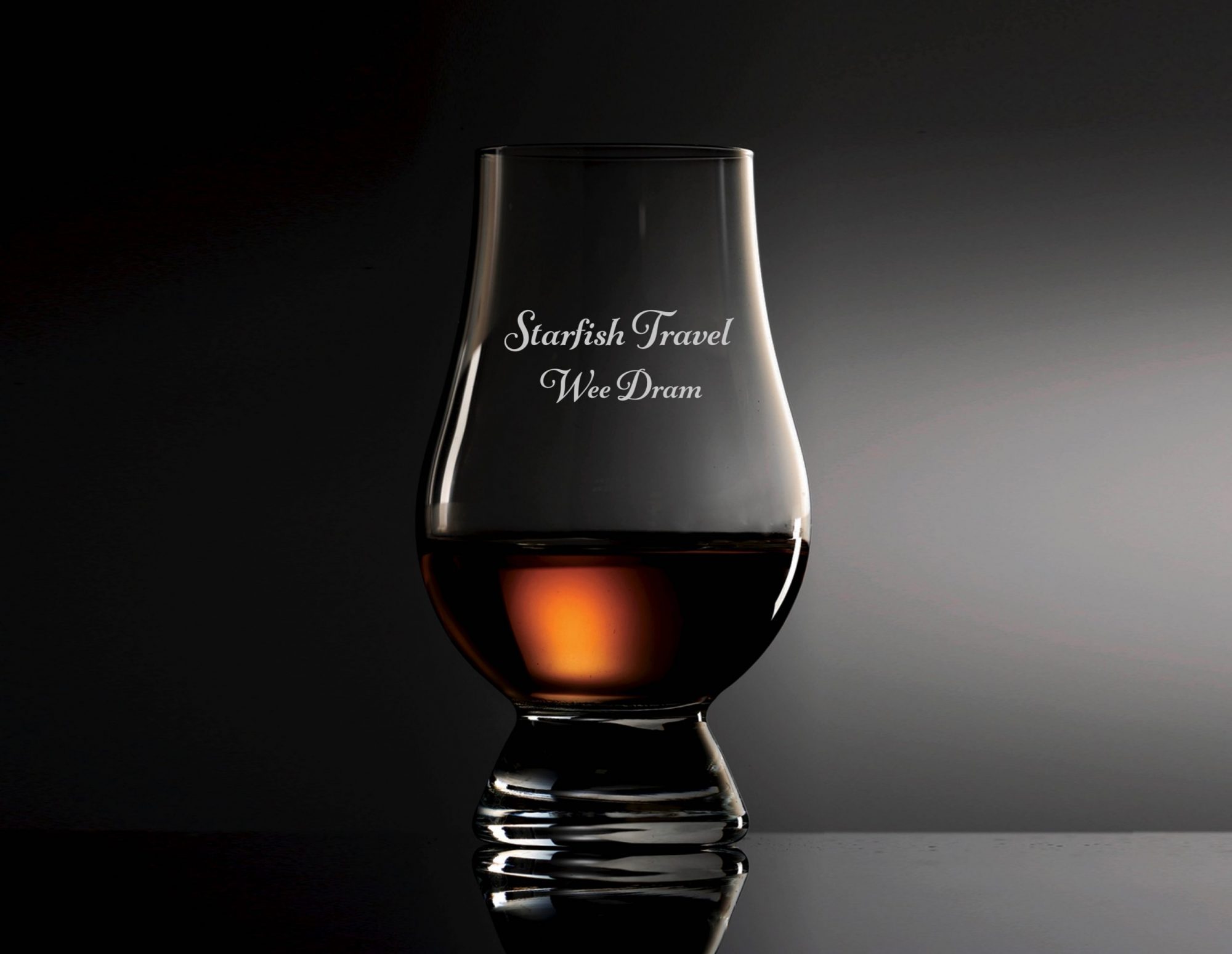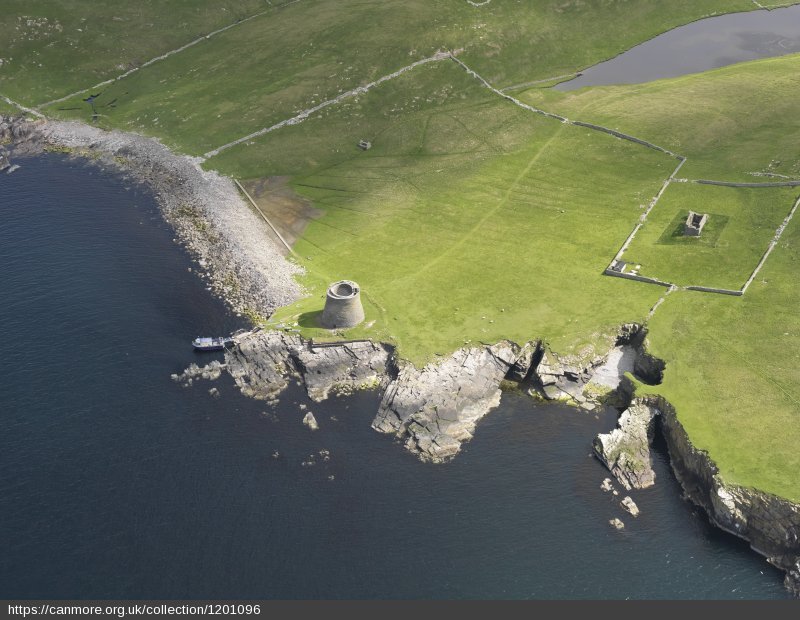
© Crown Copyright: HES
What exactly is a castle? If you look at a lists of castle you often find that it contains houses as well as palaces. Most castles started as dens or brochs. A den is usually referred to a hideaway often in a secluded wooded area, whereas a broch dates back to the Iron age and is a hollow walled tower, which was used for defensive purposes. Castles were first built in 11th or 12th century and were often wooden structures: motte-and-bailey castles. From around 1200 these were replaced by stone-built castles.
In the 14th century the curtain-walled castles were replaced by more modest tower houses with less focus on fortification.
Latest in 17th century many strongholds had turned into palaces or houses being used to represent rather than defend.
On this background a simple question such as:” How old is Edinburgh castle?” becomes almost impossible to answer. We do know that Edinburgh castle’s history can be traced to the 12th century, but there were older structures on the site. We also know that Edinburgh castle has been a Royal Residence since the 11th century and that it has played a significant role in Scottish history for the past 800 years.
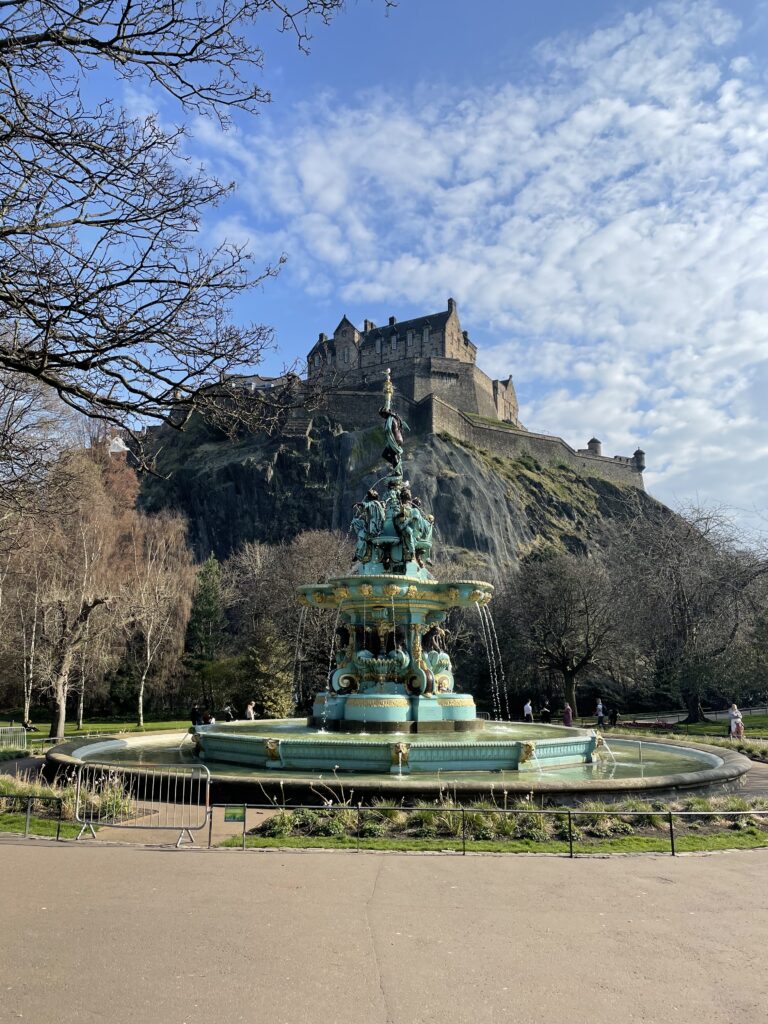
After having spotted a deer with a cross between his antler’s while hunting those grounds at the bottom of the Royal Mile King David I built an Abbey in 1128 . You do wonder how good the whisky production was back then.
The Abbey is a ruine these days but James IV after marrying Magret Tudor (sister of of Herny VIII) built the first palace (yet another Royal Residence in Edinburgh) there in 1503. Very little remains of this building but it is though to be quandragular. It was James V who started building the Royal Quarters.
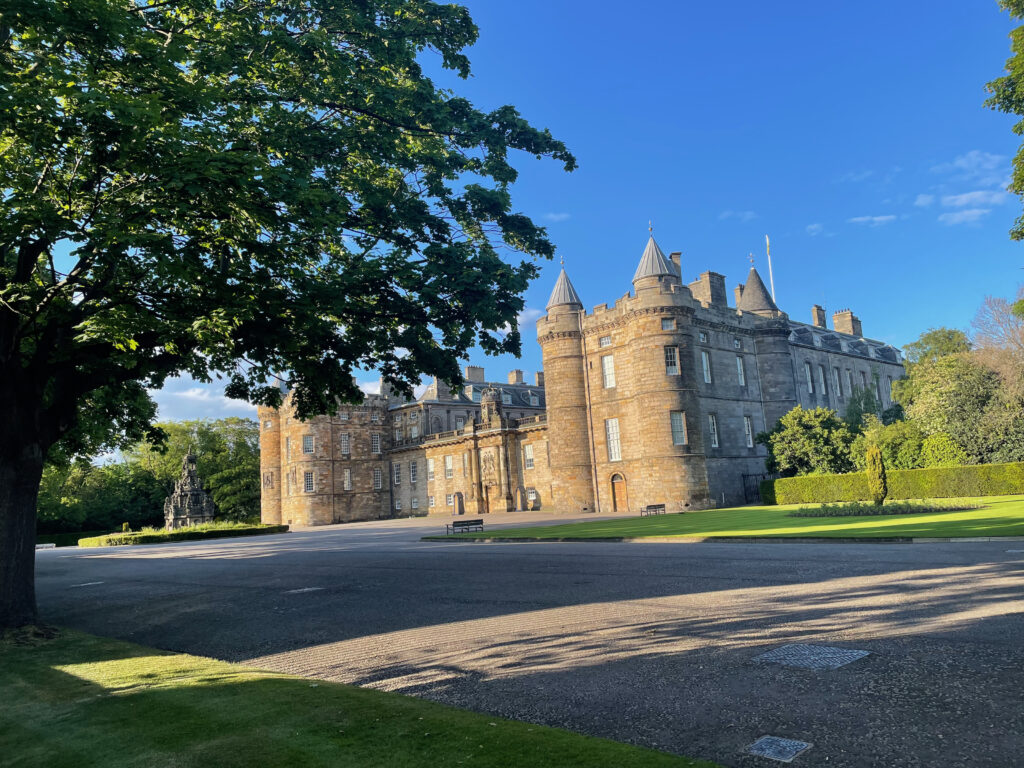
If you visit Stirling castle, yet another place where a lot of Scotland’s history took place, you will find different buildings on the grounds stem from different centuries. The North Gate contains the earliest known stonework still standing in the castle, dating back to 1380, but in 1538 again James V build a large renaissance palace here to show how educated he was and to honour his wife Marie de Guise. Though it is believed he did not live long enough to see it completed.
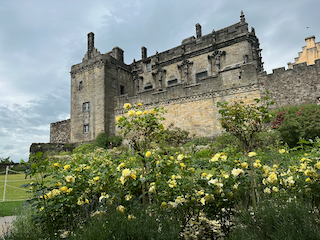
Going down the Firth of Forth stopping at Hopetoun Estate you will be able to visit Midhope Castle, which is propably better known at Lallybroch in Outlander. This castle was turned into farm workers’ accommodation when the Hope family built the much grander Hopetoun house in 1699 by Sir William Bruce and then much expanded by archiect William Adam in 1721. By 1851 53 people were still living in Midhope Castle. Later it fell into disrepair and in 1988 its outside was consolidated before it became very famous indeed with the Outlander series.
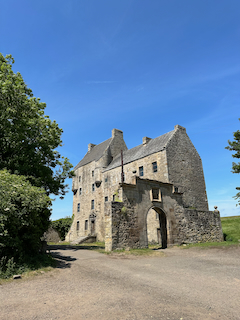
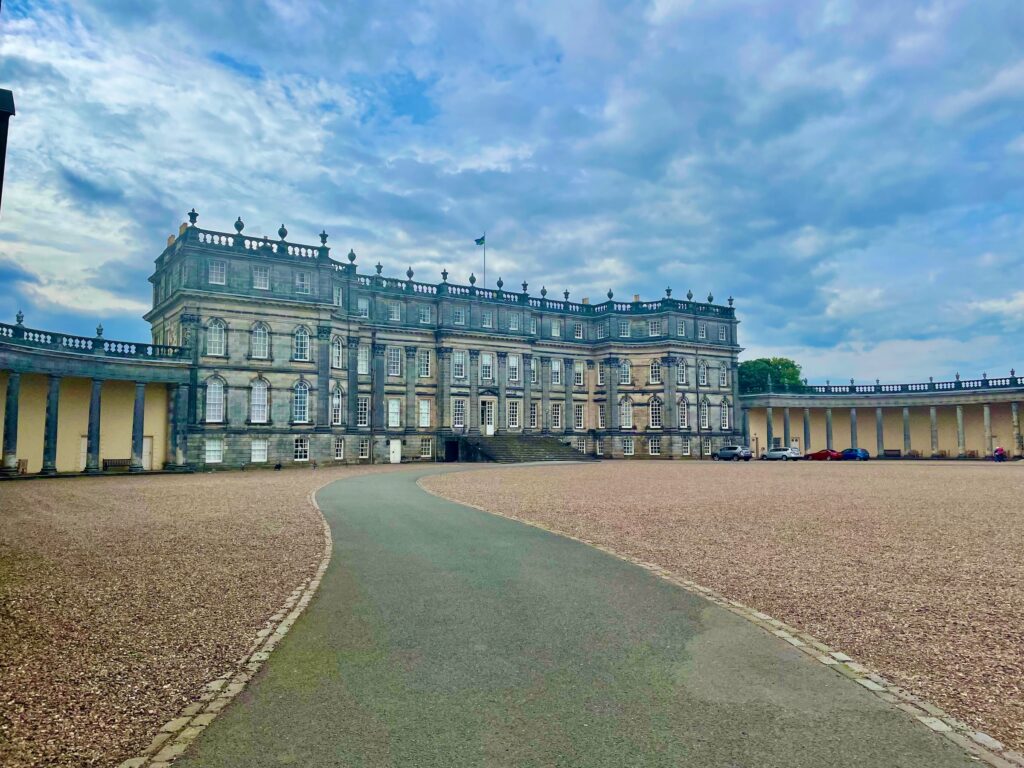
On the way along the river Firth you could have stopped to visit Linlithgow Palace or gone further to Dalmeny House on the Rosberry estate, not to mention Culross Palace to dip into the history of coalmining or follow along Outlander film location.
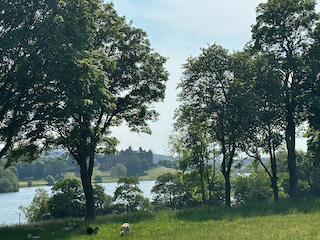
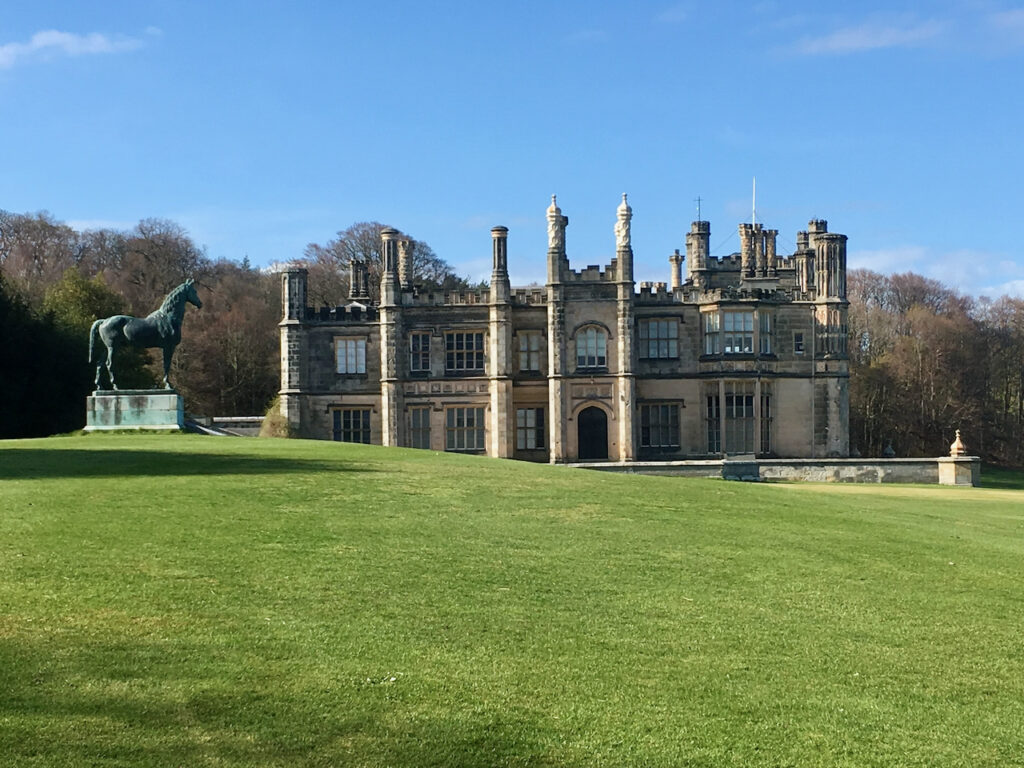
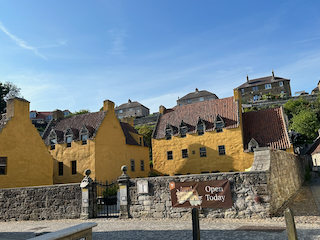
These few castle, palaces & house you have a lovely day tour:
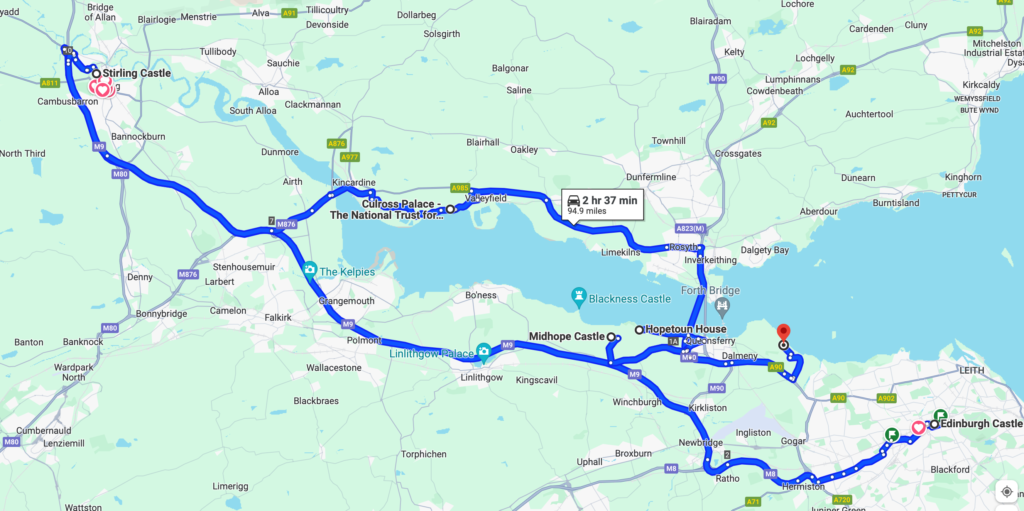
There are many, many more castles to visit do get in touch to have your own bespoke tour curated:
